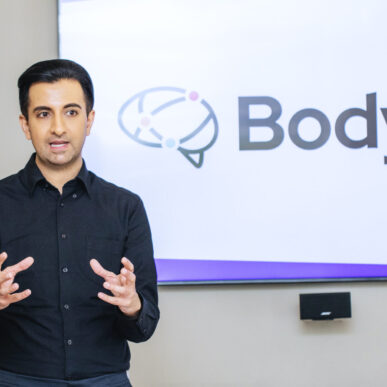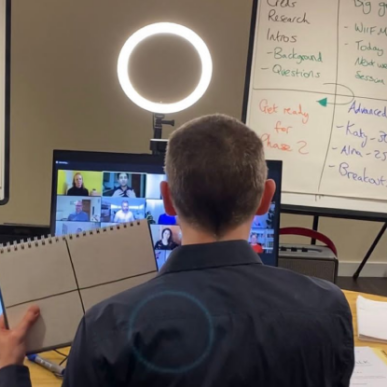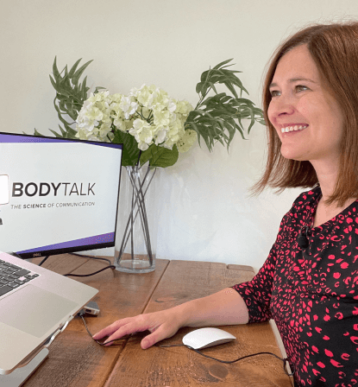‘It’s so much harder in the virtual world to keep the attention of everyone in the meeting. It becomes a barrier to effective communication‘
Three Ways To Keep Your Audience Engaged In Virtual Meetings
It’s fair to say most businesses have now adapted to communicating via online platforms. Even as we make a tentative return to face-to-face meetings, Zoom, Microsoft Teams, Google Meet and their virtual friends will still play a big part in how we approach business communication.
The challenge which hasn’t gone away is how to keep an audience engaged. It’s so much harder in the virtual world to keep the attention of everyone in the meeting or presentation. Videos don’t get turned on, rapport is hard to build, and people are more easily distracted in their home environment. All of this creates a barrier to effective communication.
So, what can we do? Here are some easy, actionable tips to help you become a virtual presenting pro!
TECHNICAL SET UP
Looking and sounding great can help keep the focus of your audience. Three key areas can immediately improve your online conversations:
Camera – You need to have your camera on, and that’s just the first step. The angle of your camera is essential too; if your laptop camera is below your eye line, your audience will receive an ‘up the nose’ shot. If you’re too close to the camera, you could come across as intimidating. Too high, and you’ll look small and lose your impact. Ideally, you want to have the camera on the same level as your eye line with very little space between the top of your head and the top of the shot. This should also allow more of your torso to be seen. If in doubt, think of how a newsreader presents the evening news!
Lighting – If an audience can’t see your face, you’re missing out on a significant part of communication: Our facial expressions are essential in telling the audience how they should feel about the information you’re sharing. Ensure the primary light source is in front of you, not behind you (sitting in front of a window will mean you’re ‘back-lit and will cast shadows over your face). Another tip is to place a lamp or selfie light behind your laptop with the light shining on your face.
Microphone – We often think about how we look on virtual platforms, but not how we sound. The microphone on your PC or laptop will pick up background noise and echo in the room; headsets place the microphone close to your mouth, which means plosive and breath sounds are amplified. A cheap and better alternative is a lavellier mic or clip mic which you can clip on your clothes close to your breastbone. This microphone focuses your voice in one place and minimises distracting noises.
DON’T HIDE BEHIND YOUR SLIDES
Remember this; you are the presentation, not the slides. It’s tempting to share PowerPoint or Keynote at the start of the meeting, turn your camera off and let the slides do the talking. It’s pretty much Death by PowerPoint, and no one wants that. Keep your slides simple and don’t have them up all the time. Dip in and out to allow conversation, feedback or polls. Use different mediums in your deck, such as videos or investigate interactive slides via Mentimeter.
GET YOUR AUDIENCE INVOLVED
Get a conversation going as soon as you can. If there are more than four people on the call, then use the chatbox. It’s an often-underused tool in virtual communication and can be very beneficial, especially for those who may not feel comfortable speaking up. Create curiosity within your presentation and encourage the audience to ask questions. If you’re using Zoom or Webex, try the annotation tools. Not only are they fun for the audience to use, but they also allow you to orientate focus to a critical point on your slides.
One final thought. A mistake often made is to approach business communication with the idea of ‘what is it I want to say?’ which immediately puts you at a disadvantage. Why? Because audiences don’t care about what you want to say, they’re only interested in what they need to hear. Put your audience front and centre and craft your presentation with their needs and desires in mind. What will they get out of it? What benefits does it bring to them? How will it help them?
Simply put, know your audience!




















